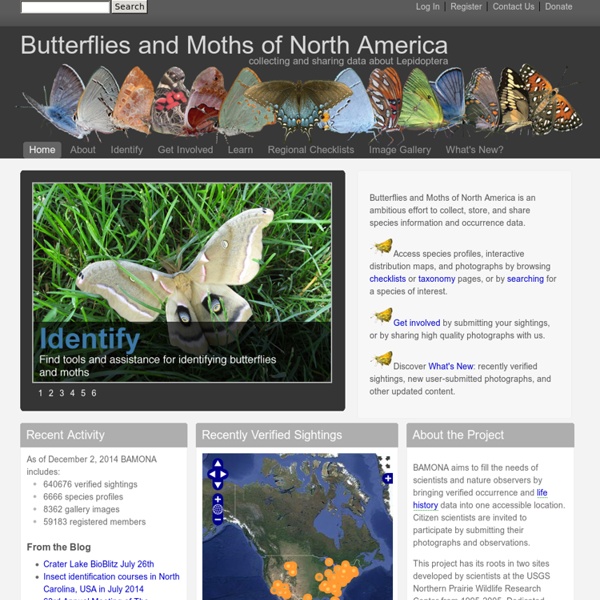



Monarch Butterflies, Monarch Butterfly Pictures, Monarch Butterfly Facts Monarch butterflies are known for the incredible mass migration that brings millions of them to California and Mexico each winter. North American monarchs are the only butterflies that make such a massive journey—up to 3,000 miles (4,828 kilometers). The insects must begin this journey each fall ahead of cold weather, which will kill them if they tarry too long. Monarch butterflies begin life as eggs and hatch as larvae that eat their eggshells and, subsequently, the milkweed plants on which they were placed. Fattening larvae become juicy, colorful caterpillars, then create a hard protective case around themselves as they enter the pupa stage. Butterflies that emerge from chrysalides (pupa state) in late summer and early fall are different from those that do so during the longer days and warmer weather of summer. Only monarchs born in late summer or early fall make the migration, and they make only one round trip.
What do Butterflies Eat? Facts About Butterflies - Different Types Of Butterflies And Butterfly Facts BUTTERFLY CREEK - Australasia`s Premier Butterfly House The butterflies are imported as pupae from butterfly farms all around the world, but primarily from Asia and Central America. The Butterfly House is temperature controlled to approximately 28 degrees C and with a high humidity so as to replicate the conditions of the butterflies’ natural environment. Inside the tropical butterfly house, as well as the butterflies, you’ll see various turtles, quails, finches, a blue tongue lizard and water dragons as well as a variety of fish in the ponds. Encounters Butterfly Releases 10.30am and 3pm Butterflies in the House click on the Common Name to see an image of your favourite butterfly Not just Butterflies in the House - ReptilesView our Reptile Gallery Here. Common Name Long necked turtle Red eared turtle Reeves turtle Eastern water dragon Eastern blue tongue skink Inland bearded dragon* * You’ll find Jepps in the area next to the alligators Did you Know! submission with a fast arm wave displaying dominance. Butterfly House Birds Scientific Name
Butterfly & Fountain World Isle of Wight "Butterflies & Blooms" Butterfly Conservatory at Blue Willow Garden & Landscape Design Centre ☼ Butterflies A-Z ☼ Butterfly Releases ☼ Creating A Butterfly Garden ☼ Did You Know? ☼ Testimonial ☼ Georgina's own Butterfly Conservatory will not be opening this year. Sadly, after 11 great seasons, the Butterflies and Blooms Butterfly Conservatory will close it’s doors. Due in part to declining group bookings, staffing issues and economic conditions (among other reasons) we were forced to make the heart-breaking decision. However, we are still the ‘Butterfly & Garden Experts’. So keep in touch, we would be pleased to keep you informed. Butterfly Releases We provide butterfly lovers another service, Butterfly Releases (Monarch and Painted Ladies) for special occasions or important events, such as weddings, birthday parties, memorial tributes, and testimonial gatherings or send-off ceremonials, and salutations. Creating A Butterfly Garden ☼ Creating A Butterfly Garden [pdf] Butterflies exist naturally throughout Canada. your flowers. Did You Know? Butterflies taste with their feet.
The Butterfly WebSite - butterfly garden, butterfly gardens, buttefly zoo, butterflies zoo, butterfly exhibit, butterfly house, butterfly feeder We try to keep this list as accurate as possible, but changes occur often. If you have updated information for us, please click HERE to enter the info in a form, or simply email us at butterfly@mikulawebsolutions.com If you are planning on visiting any of these exhibits, please check their websites or call them for current information. Some information might be out-of-date. Africa Butterfly World South Africa P.O. Klapmuts 7625 Phone: ++27-21-8755628 Fax: ++27 -21-8755230 Website: Email: esther@yebo.co.za Route 44 near Klapmuts, just off the N1, at the junction of the main Wine Routes of Stellenbosch and Paarl. Butterflies for Africa 37 Willowton Rd Pietermaritzburg, 3201 Phone: +27-33-3871356 Website: The Butterfly Centre - African Butterfly Research Institute P.O. 256 Dagoretti Road Karen, Nairobi Phone: 011-254-2-884972 Fax: 011-254-2-884554 Email: collinsabri@iconnect.co.ke Display native African butterflies year-round St.
www.howtocompost.org/info/info_composting.asp The art of composting has been part of our global culture since ancient times. The basic principles are quite simple, and adhering to them will result in an efficient and successful outcome. Studies have shown that home composting can divert an average of 700 lbs. of material per household per year from the waste stream. Composting is the transformation of organic material (plant matter) through decomposition into a soil-like material called compost. An ancient practice, composting is mentioned in the Bible several times and can be traced to Marcus Cato, a farmer and scientist who lived in Rome 2,000 years ago. Today there are several different reasons why composting remains an invaluable practice. The standard means of disposal for most yard and food waste include landfilling and incineration. Landfilling organic wastes also takes up landfill space needed for other wastes. Decomposition occurs naturally anywhere plants grow. All organic material will eventually decompose. Surface Area
the butterfly collection at the field museum Why are butterflies important? They pollinate flowering plants and serve as food to birds and other animals. They’re a litmus test of our environment, giving us early warning of pollution or other kinds of habitat degradation. And of course, they’re among the most beautiful of all creatures. What threatens butterflies? Primarily loss of habitat: Prairie, wetlands, and woodlands are losing ground to farming, industry, and housing developments. You can help preserve butterfly and moth populations by planting wildflowers, other favored “butterfly plants,” and host plants for caterpillars. Go to some examples of extinct and threatened butterflies.